Abstract
The increased rate of RNA synthesis by target cells caused by the plant hormone auxin has been studied as an example of hormonal regulation of transcription. The hormone does not interact directly with chromatin but requires a protein mediator. In the presence of this mediator, auxin increases the rate of RNA synthesis both by isolated plant nuclei and by isolated chromatin. This increased rate of RNA synthesis occurs even in the presence of saturating amounts of RNA polymerase. The hormone and protein do not affect the rate of RNA synthesis if pure DNA is used as the template. The results suggest that auxin plus the protein increase the rate of RNA synthesis by making an increased portion of the genome available for transcription.
Full text
PDF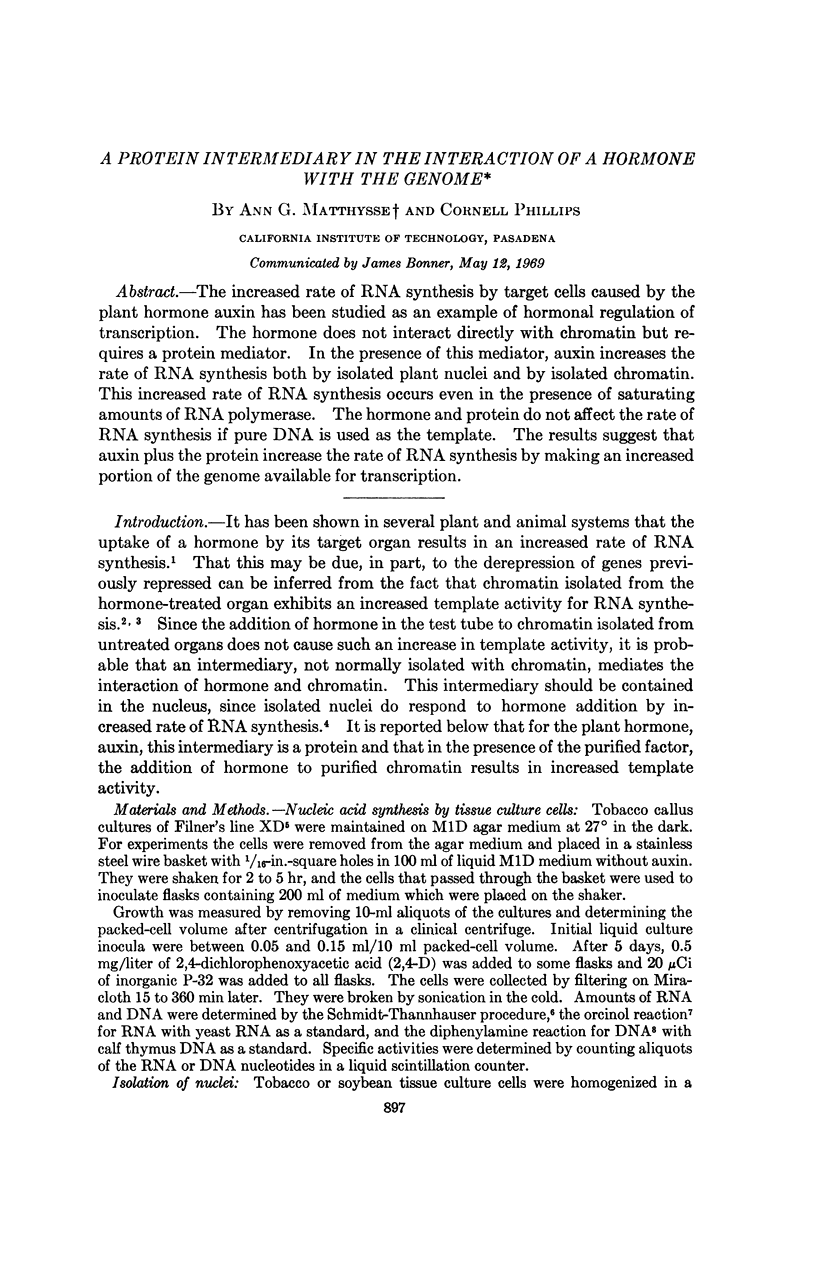
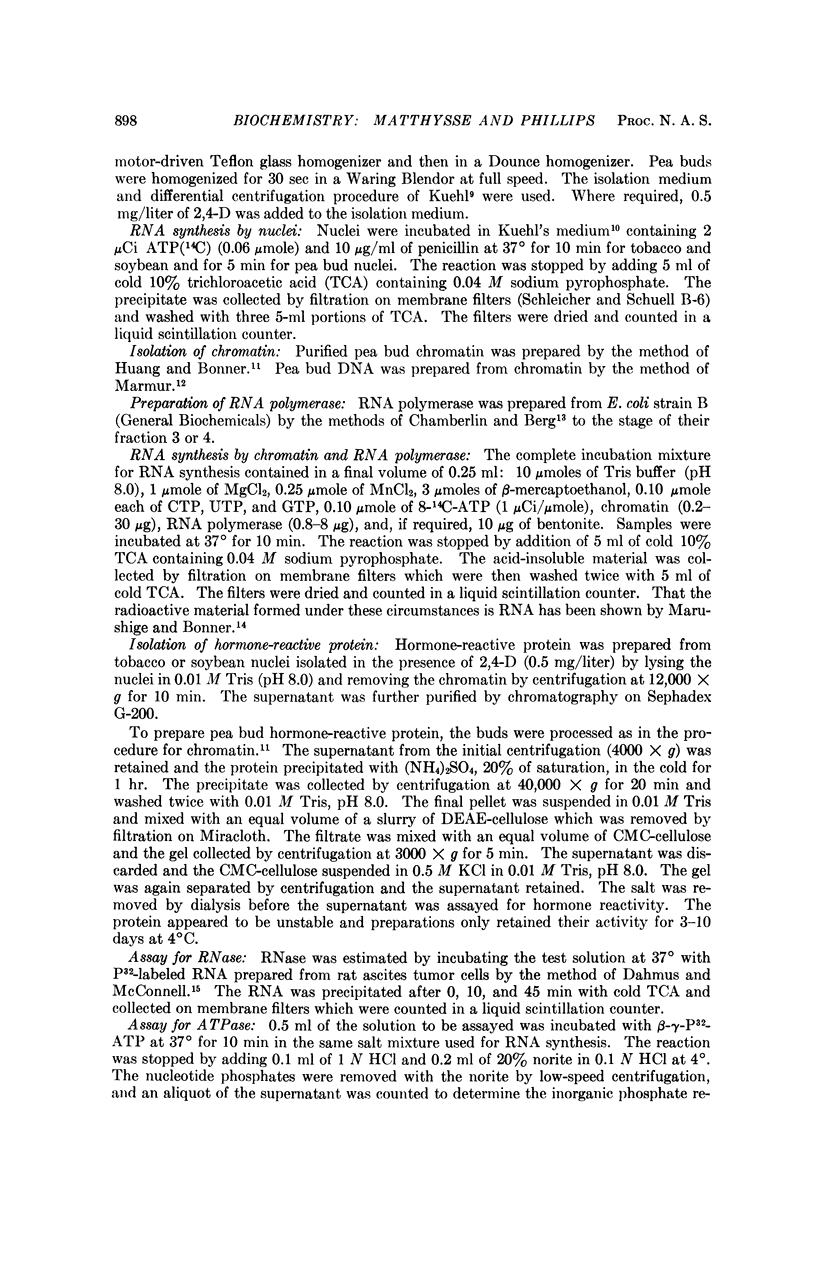

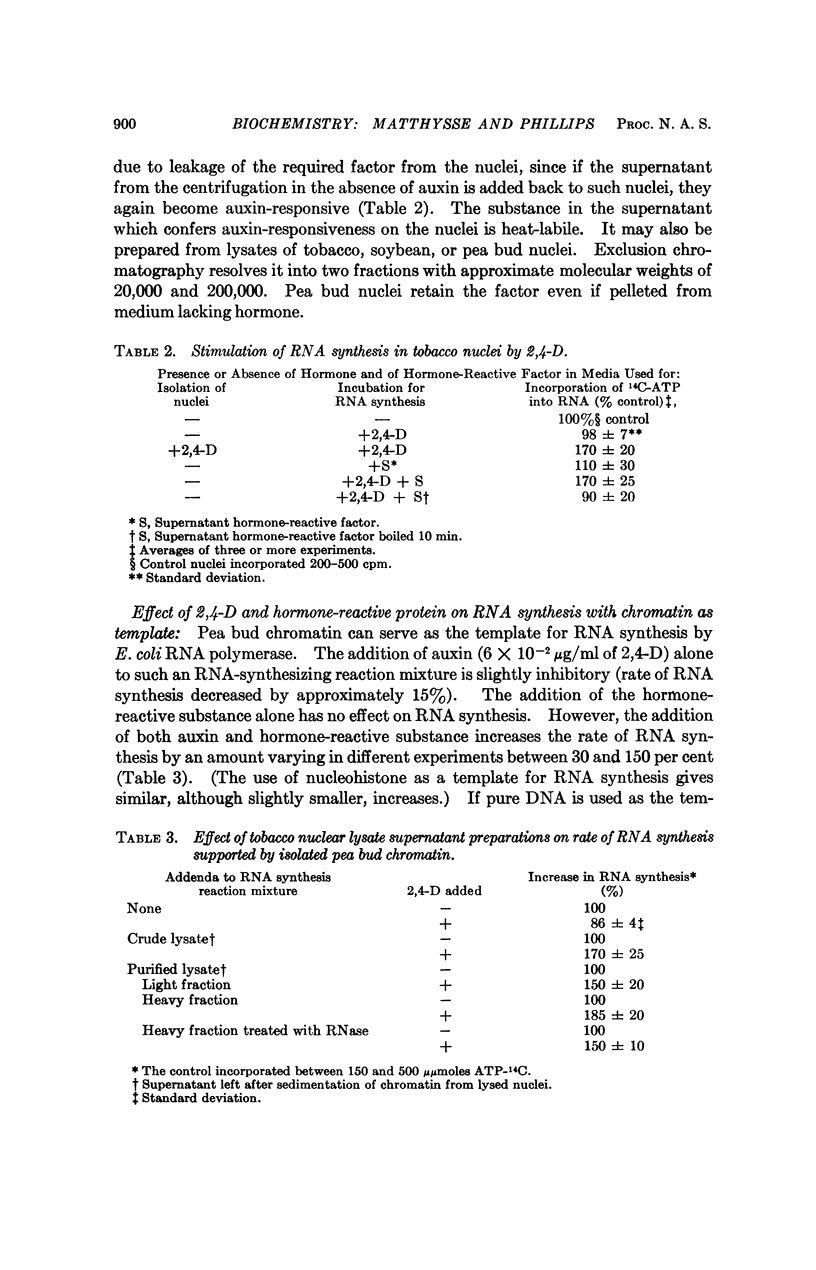
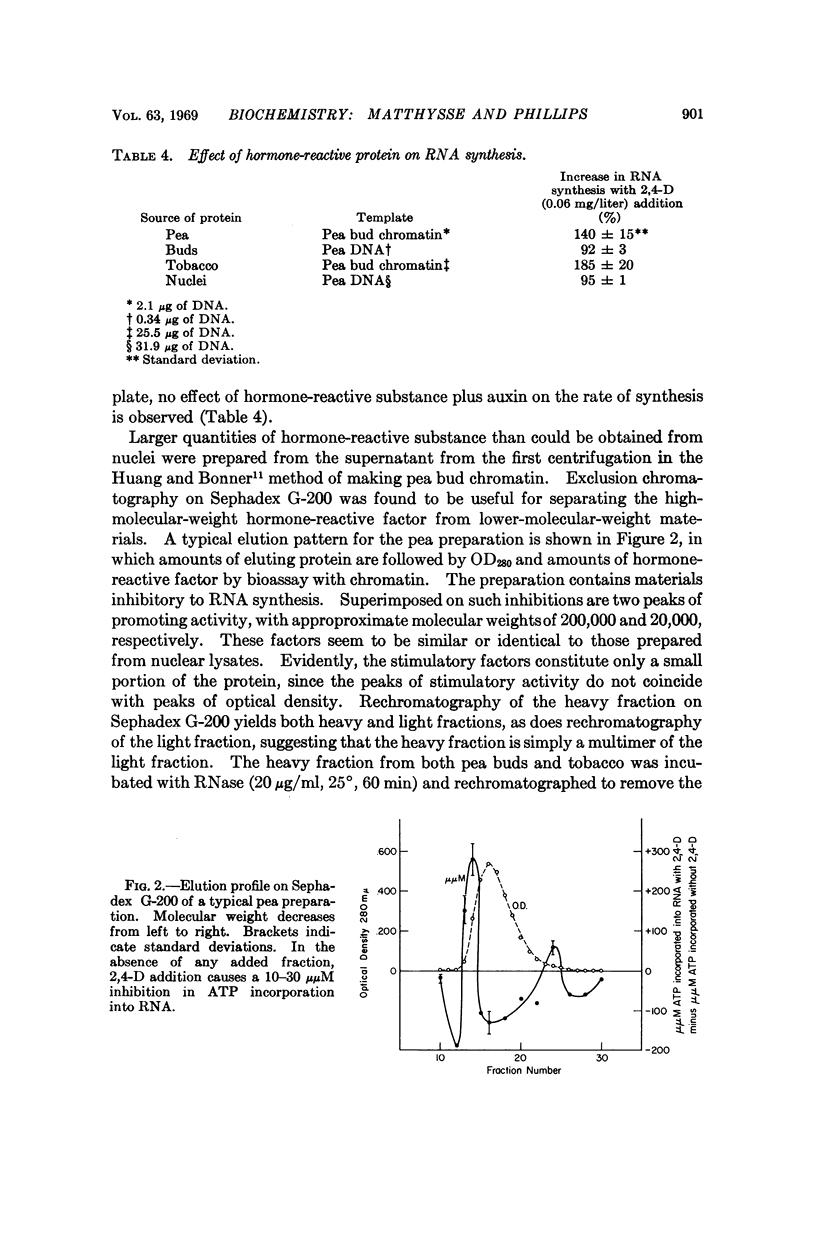
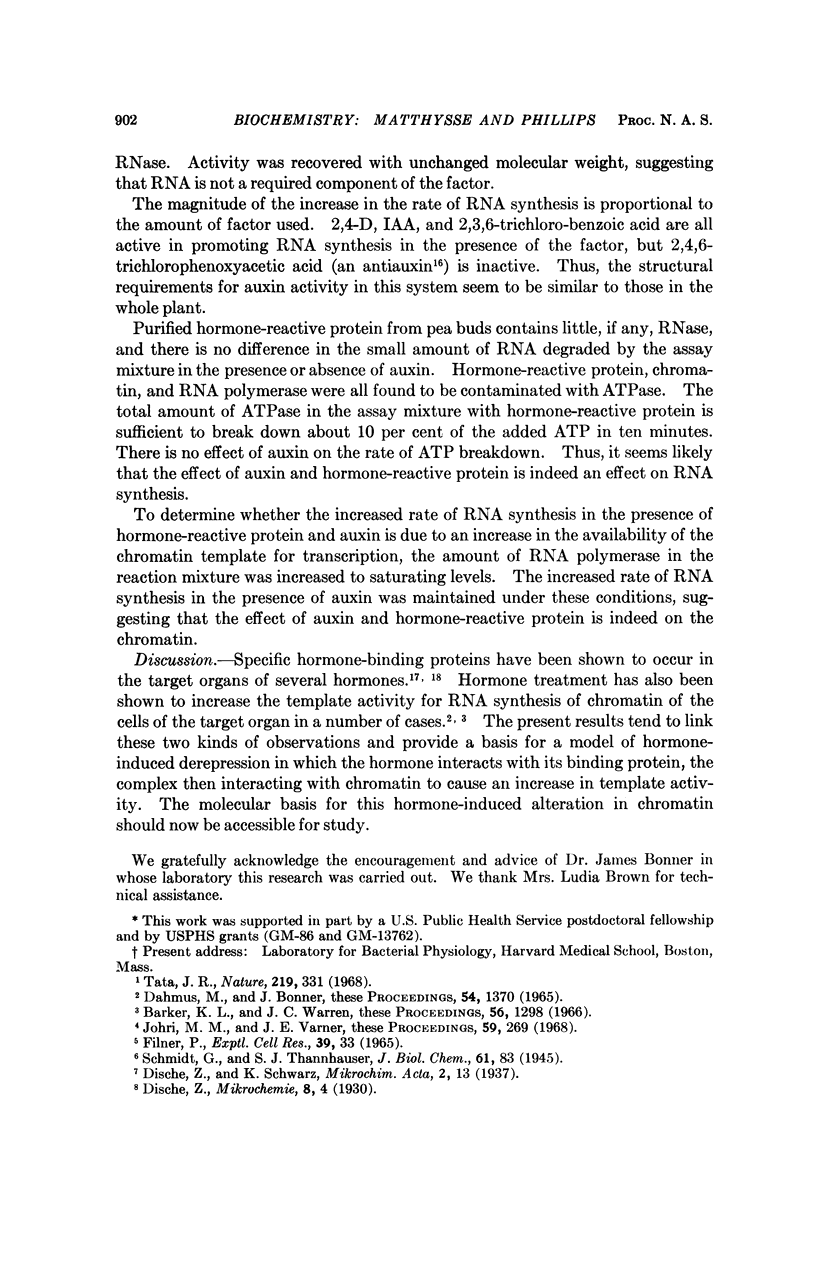
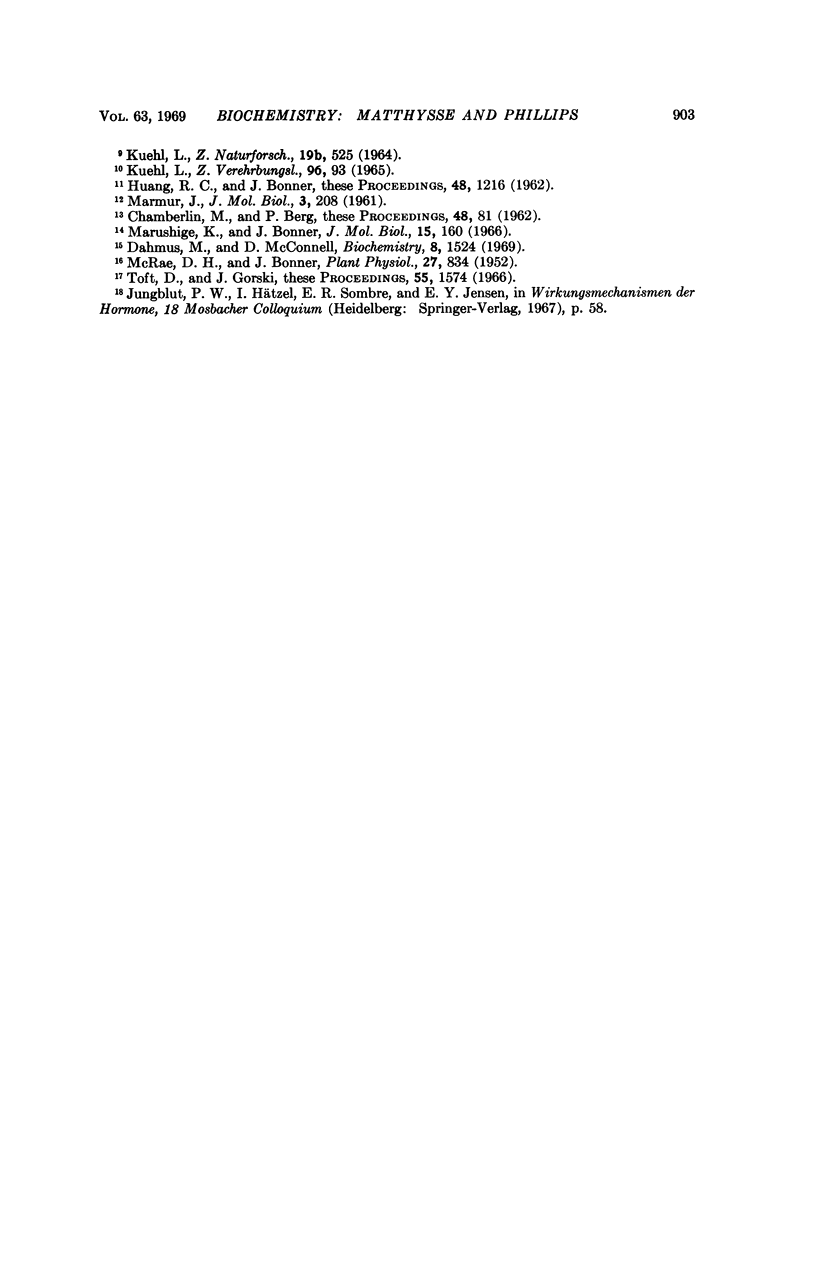
Selected References
These references are in PubMed. This may not be the complete list of references from this article.
- Barker K. L., Warren J. C. Template capacity of uterine chromatin: control by estradiol. Proc Natl Acad Sci U S A. 1966 Oct;56(4):1298–1302. doi: 10.1073/pnas.56.4.1298. [DOI] [PMC free article] [PubMed] [Google Scholar]
- CHAMBERLIN M., BERG P. Deoxyribo ucleic acid-directed synthesis of ribonucleic acid by an enzyme from Escherichia coli. Proc Natl Acad Sci U S A. 1962 Jan 15;48:81–94. doi: 10.1073/pnas.48.1.81. [DOI] [PMC free article] [PubMed] [Google Scholar]
- Dahmus M. E., Bonner J. Increased template activity of liver chromatin, a result of hydrocortisone administration. Proc Natl Acad Sci U S A. 1965 Nov;54(5):1370–1375. doi: 10.1073/pnas.54.5.1370. [DOI] [PMC free article] [PubMed] [Google Scholar]
- Dahmus M. E., McConnell D. J. Chromosomal ribonucleic acid of rat ascites cells. Biochemistry. 1969 Apr;8(4):1524–1534. doi: 10.1021/bi00832a031. [DOI] [PubMed] [Google Scholar]
- Filner P. Semi-conservative replication of DNA in a higher plant cell. Exp Cell Res. 1965 Aug;39(1):33–39. doi: 10.1016/0014-4827(65)90004-2. [DOI] [PubMed] [Google Scholar]
- HUANG R. C., BONNER J. Histone, a suppressor of chromosomal RNA synthesis. Proc Natl Acad Sci U S A. 1962 Jul 15;48:1216–1222. doi: 10.1073/pnas.48.7.1216. [DOI] [PMC free article] [PubMed] [Google Scholar]
- Johri M. M., Varner J. E. Enhancement of RNA synthesis in isolated pea nuclei by gibberellic acid. Proc Natl Acad Sci U S A. 1968 Jan;59(1):269–276. doi: 10.1073/pnas.59.1.269. [DOI] [PMC free article] [PubMed] [Google Scholar]
- Marushige K., Bonner J. Template properties of liver chromatin. J Mol Biol. 1966 Jan;15(1):160–174. doi: 10.1016/s0022-2836(66)80218-8. [DOI] [PubMed] [Google Scholar]
- McRae D. H., Bonner J. DIORTHO SUBSTITUTED PHENOXYACETIC ACIDS AS ANTIAUXINS. Plant Physiol. 1952 Oct;27(4):834–838. doi: 10.1104/pp.27.4.834. [DOI] [PMC free article] [PubMed] [Google Scholar]
- Tata J. R. Hormonal regulation of growth and protein synthesis. Nature. 1968 Jul 27;219(5152):331–337. doi: 10.1038/219331a0. [DOI] [PubMed] [Google Scholar]
- Toft D., Gorski J. A receptor molecule for estrogens: isolation from the rat uterus and preliminary characterization. Proc Natl Acad Sci U S A. 1966 Jun;55(6):1574–1581. doi: 10.1073/pnas.55.6.1574. [DOI] [PMC free article] [PubMed] [Google Scholar]


